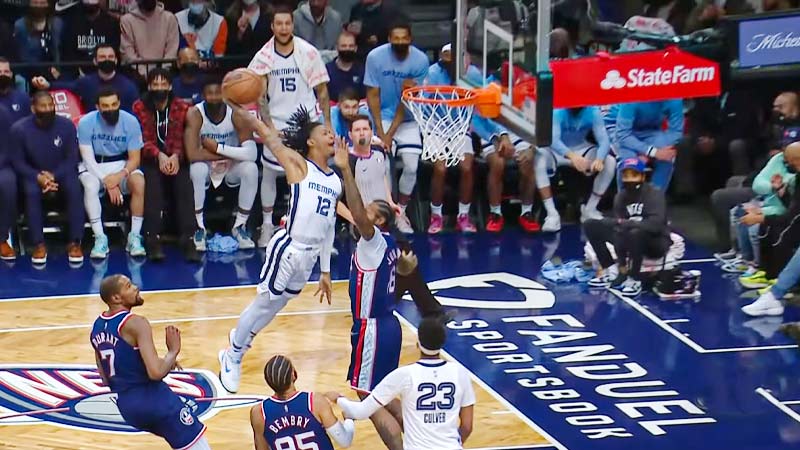Basketball is a fast-paced and exciting sport that captivates fans around the world. To fully appreciate and enjoy the game, it’s important to have a solid understanding of its basic rules.
Whether you’re a player, coach, or enthusiastic spectator, knowing the rules of basketball will enhance your experience and deepen your appreciation for the sport.
In this article, we will explore the fundamental rules of basketball and provide clarity on some frequently asked questions. Let’s get started.
10 Basic Rules of Basketball
Basketball is a popular sport played by millions of people worldwide. It involves two teams of five players each, who compete to score points by shooting a ball through their opponent’s hoop.
To ensure fair play and maintain order during the game, basketball has a set of rules that players must follow. Here are the basic rules of basketball, elaborated with explanations
1. Court and Equipment
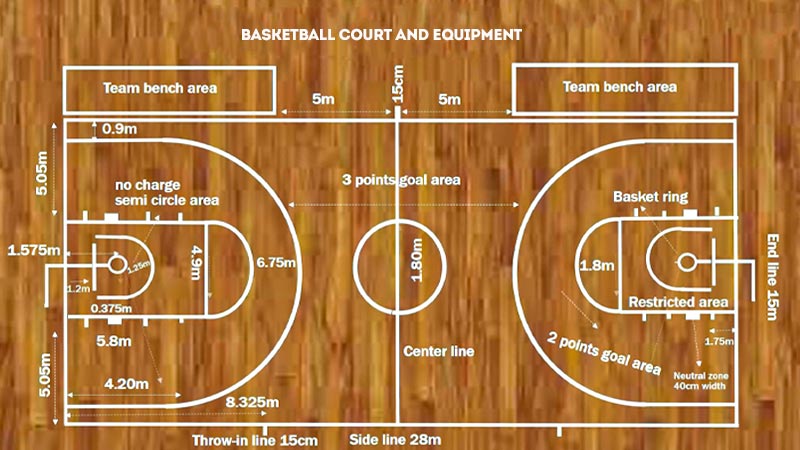
The basketball game is played on a rectangular court with a hardwood surface. The court is typically 94 feet long and 50 feet wide in the NBA, while in international play and college basketball, it measures 91.9 feet by 49.2 feet.
The court is divided into two halves by a midcourt line, and each half contains a team’s respective offensive and defensive areas.
At each end of the court, there is a basket consisting of a metal hoop and a backboard. The rim of the hoop is 18 inches in diameter and positioned 10 feet above the ground.
2. Teams and Players
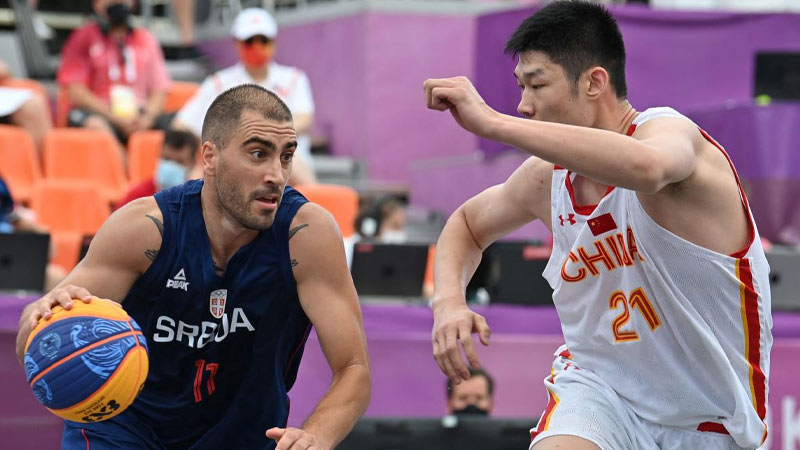
Source: nbacourtoptix.nba.com
A basketball team consists of five players on the court at a time. Each team has additional players available on the bench as substitutes.
The players are assigned specific positions: point guard (PG), shooting guard (SG), small forward (SF), power forward (PF), and center (C). Each position has its own roles and responsibilities.
3. Starting the Game
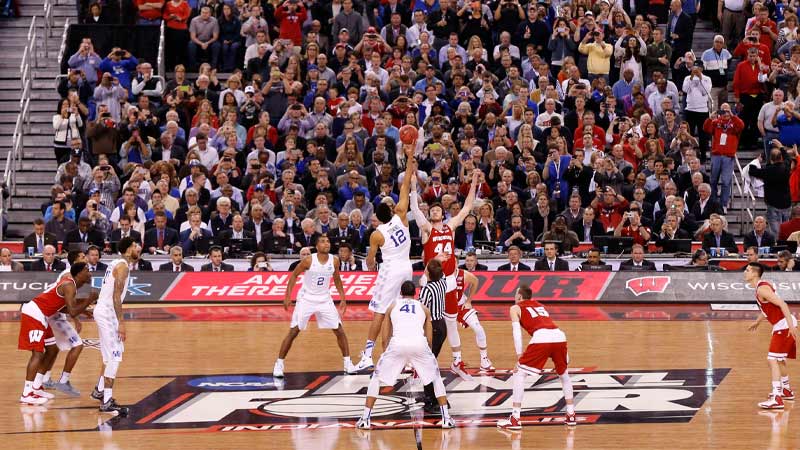
Source: ftw.usatoday.com
The game begins with a tip-off, where the referee tosses the ball into the air between two opposing players positioned in the center circle.
The two players jump and try to gain possession of the ball by tapping or directing it to their teammates. The team that gains control of the ball is awarded the first possession.
4. Dribbling

Source: owayo.com
Dribbling is the act of bouncing the basketball on the floor while moving. It allows players to maintain control of the ball while advancing toward the basket or setting up plays.
A player must dribble the ball while moving, allowing them to take up to two steps without dribbling. However, once they stop dribbling, they must either pass the ball to a teammate or attempt a shot.
Dribbling violations include double dribbling (using both hands simultaneously while dribbling), carrying or palming (excessive hand contact that impairs the defender’s ability to steal the ball), and traveling (taking more than two steps without dribbling).
5. Passing
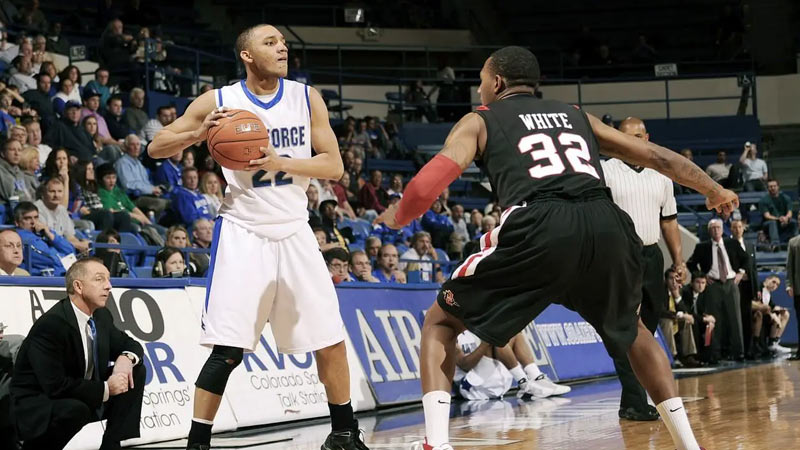
Source: youthhoops101.com
Passing is the act of transferring the ball from one player to another. It allows players to move the ball quickly and strategically around the court.
Passes can be made using one hand or both hands, in any direction (including overhead or behind the back). Players can also bounce the ball off the floor before reaching a teammate.
Different types of passes include chest passes, bounce passes, overhead passes, and alley-oops (a high pass near the basket for a teammate to catch and score in one motion).
6. Shooting and Scoring
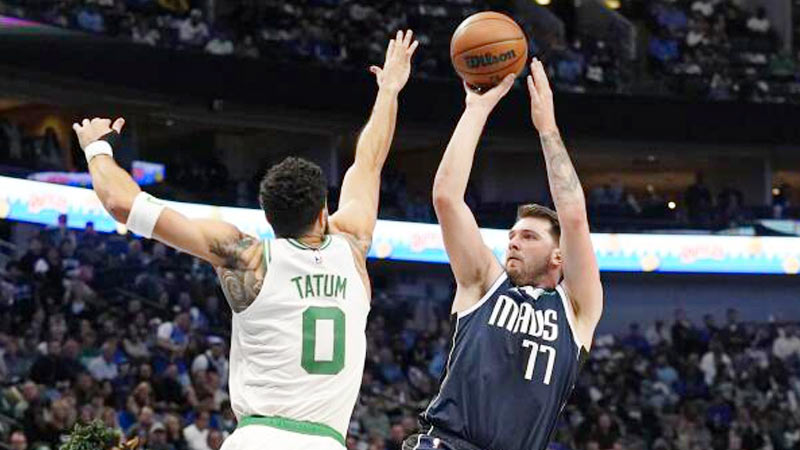
Source: apnews.com
The primary objective of basketball is to score points by shooting the ball into the opponent’s basket.
A successful shot made from within the three-point line (the arc on the court) is worth two points, while shots made from beyond the three-point line are worth three points.
Free throws, also known as foul shots, are awarded when a player is fouled during a shooting attempt or when the opposing team commits a certain number of fouls. Free throws are worth one point each.
7. Violations
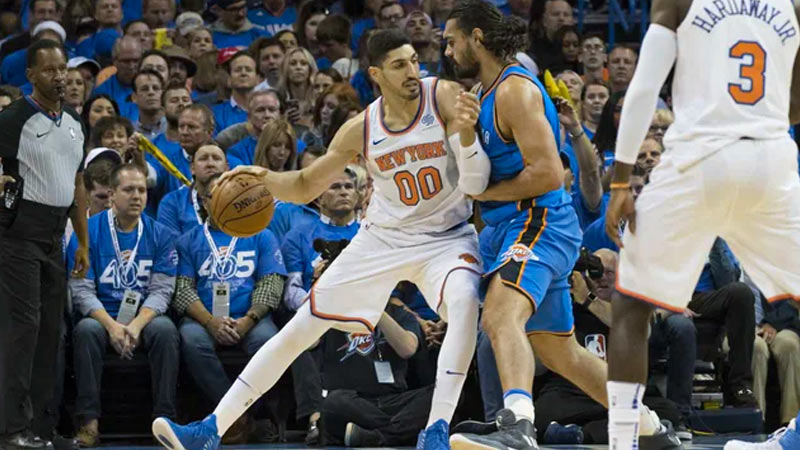
Source: reddit.com
Violations occur when a player breaks the rules without making illegal physical contact with an opponent. Violations result in a turnover, meaning the opposing team gains possession of the ball.
Common violations include traveling (moving without dribbling or taking too many steps), stepping out of bounds while in possession of the ball, or committing an offensive or defensive three-second violation (staying in the key area for more than three seconds without actively guarding an opponent or attempting a shot).
8. Fouls
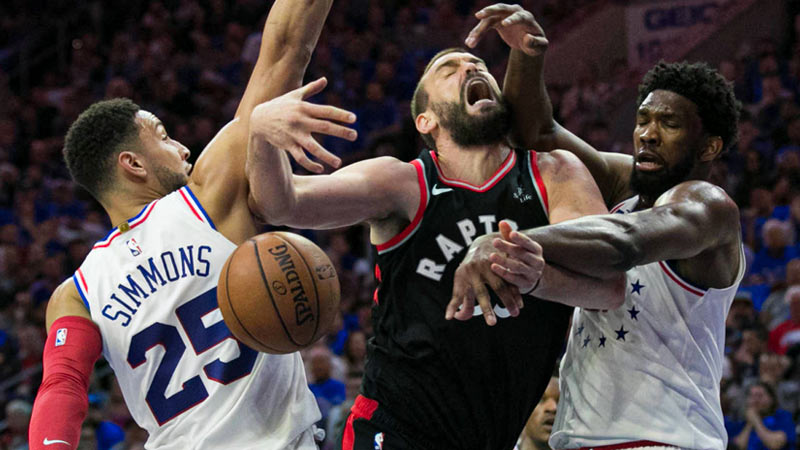
Source: yardbarker.com
Fouls occur when a player makes illegal physical contact with an opponent. Fouls can be committed on both offense and defense.
Personal fouls include actions like pushing, tripping, holding, striking, or impeding the progress of an opponent.
Players accumulate personal fouls, and after a certain number (typically five in professional and college basketball), they are disqualified from the game.
Some fouls result in free throws for the opposing team, while others lead to the team in possession of the ball being awarded an inbound pass.
9. Shot Clock
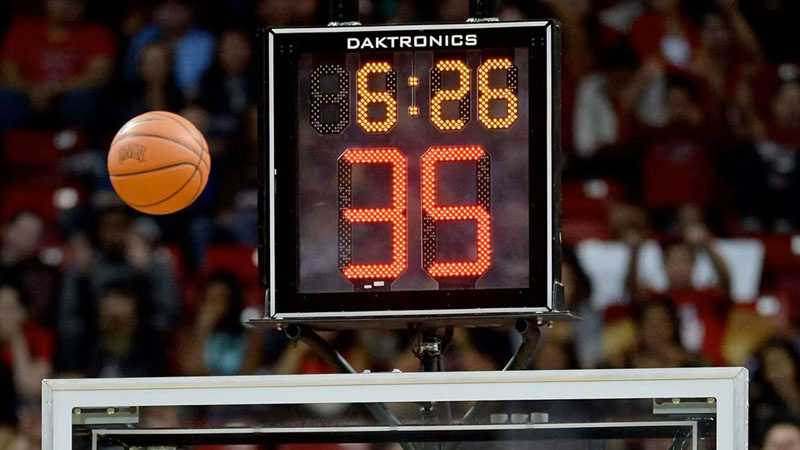
Source: southbendtribune.com
The shot clock is a mechanism used in professional and college basketball to ensure teams attempt a shot within a specified time limit.
In the NBA, the shot clock is set to 24 seconds, while in college basketball, it is generally set to 30 seconds.
Once a team gains possession of the ball, they must attempt a shot that hits the rim before the shot clock expires. If they fail to do so, it results in a turnover, and the opposing team gains possession.
10. Overtime

Source: dailybruin.com
If the game ends in a tie at the end of regulation time (four quarters), an additional period called overtime is played.
Overtime is typically five minutes long in professional basketball but may vary in other leagues.
The team that scores the most points during overtime wins the game. If the game is still tied at the end of the first overtime period, subsequent overtime periods are played until a winner is determined.
These rules provide a comprehensive overview of the basic regulations in basketball. However, it’s worth noting that different leagues, organizations, or levels of play may have additional or slightly modified rules.
It’s always advisable to refer to the specific rulebook or regulations of the particular basketball league or competition for precise details.
Significance of the Basic Rules of Basketball
The basic rules of basketball hold significant importance in the sport, influencing the fairness, competitiveness, and overall integrity of the game.
These rules serve as a foundation that players, coaches, referees, and spectators rely on to ensure a level playing field and an enjoyable basketball experience.
Let’s explore the significance of the basic rules of basketball in more detail:
Fairness and Sportsmanship
The rules of basketball promote fairness and sportsmanship among players. They establish guidelines for acceptable conduct, prohibiting actions such as pushing, tripping, or making illegal contact with opponents.
By adhering to these rules, players are encouraged to compete within the boundaries of fair play, fostering a sense of integrity and respect for the game.
Balanced Gameplay
The rules of basketball create a balanced and competitive environment. They prevent any one player or team from gaining an unfair advantage over others.
For example, rules on traveling and double dribbling ensure that players cannot move with the ball without dribbling or dribbling with both hands simultaneously, maintaining a level playing field for all participants.
Safety
Safety is a paramount concern in any sport, and basketball is no exception. The rules of basketball incorporate measures to protect the well-being of players.
Regulations on fouls and unsportsmanlike conduct deter dangerous or reckless actions that could lead to injuries.
By enforcing these rules, the game promotes the safety and physical well-being of all involved.
Consistency and Universality
The basic rules of basketball establish a consistent framework for the sport, ensuring that the game is played similarly across different levels, leagues, and competitions.
This universality allows players and teams to adapt seamlessly when participating in various basketball environments, whether it be local games or international tournaments.
Strategic Elements
The rules of basketball introduce strategic elements that enhance the game’s depth and complexity. Regulations such as shot clocks and violations related to key areas of the court influence offensive and defensive strategies.
Coaches and players must devise tactics, set plays, and make decisions based on the parameters defined by the rules, adding strategic dimensions to the sport.
Spectator Engagement
The basic rules of basketball help spectators follow and understand the game. Fans can actively engage with the sport, anticipating and interpreting the actions on the court based on their knowledge of the rules.
This involvement deepens their appreciation for the game, fosters a sense of community, and adds to the overall excitement of watching basketball.
FAQs
What is traveling in basketball?
Traveling occurs when a player takes more than a designated number of steps without dribbling the ball.
In basketball, players are allowed to take one or two steps after receiving the ball or completing a dribble before shooting or passing.
Any additional steps without dribbling are considered traveling and result in a turnover.
What is a foul in basketball?
A foul is an infraction committed by a player that results in a disadvantage for the opposing team. Fouls can include actions such as pushing, holding, or making illegal contact with an opponent.
When a foul is called, the opposing team is awarded free throws or the ball, depending on the specific circumstances of the foul.
What is the shot clock in basketball?
The shot clock is a time limit imposed on the offensive team to attempt a shot. In most professional and college basketball games, the shot clock is set to 24 seconds.
If a team fails to shoot the ball within the allocated time, it results in a shot clock violation and the opposing team gains possession.
What is a jump ball in basketball?
A jump ball occurs when two opposing players gain possession of the ball simultaneously, or when the referee deems it necessary to start the game or resume play after a held ball situation.
During a jump ball, the two players involved jump vertically and attempt to gain control of the ball through a tap or tip.
What is the three-second violation in basketball?
The three-second violation, also known as the “three-second rule,” is a rule that restricts an offensive player from remaining in the opposing team’s key or paint area for more than three seconds consecutively.
If an offensive player stays in the paint for an extended period without making an immediate attempt to score, it results in a turnover.
Conclusion
The basic rules of basketball are essential for anyone looking to engage with the sport.
From traveling and fouls to shot clocks and jump balls, these rules ensure fair play, maintain the game’s integrity, and create an exciting and competitive environment.
Whether you’re participating on the court or cheering from the sidelines, a solid grasp of the rules will enhance your enjoyment and deepen your appreciation for the beautiful game of basketball.
So, familiarize yourself with these fundamental rules and get ready to embrace the thrill and excitement of this incredible sport. Best wishes.

